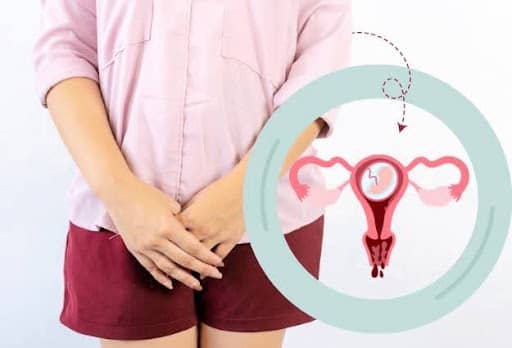Bacterial vaginosis during pregnancy is a common concern for many women. This condition can increase the risk of preterm birth and low birth weight. In this post, you will learn what causes bacterial vaginosis and how to manage it safely during pregnancy. Keep reading to protect your health and your baby’s well-being.
Key Takeaways
- Bacterial vaginosis (BV) affects 10% to 30% of pregnant women annually in the U.S., increasing risks for preterm birth and low birth weight.
- Hormonal changes during pregnancy disrupt vaginal bacteria balance, making pregnant women more vulnerable.
- Untreated BV may lead to complications like premature rupture of membranes and serious infections such as chorioamnionitis.
- Safe antibiotics, including clindamycin or metronidazole (after the first trimester), effectively treat BV during pregnancy with minimal risk to the baby.
- Early detection and treatment reduce health risks for mothers and babies; watch for symptoms like strong odor, gray discharge, or burning sensations.
Take Charge of Your Health Today
Concerned about bacterial vaginosis during pregnancy? Don’t wait—get the support and care you need now. Explore our affordable pricing and learn about our specialized services designed to prioritize your health and your baby’s well-being. Meet our experienced providers who are here to guide you every step of the way.
Have questions or ready to get started? Contact us today for personalized care and peace of mind.
What is Bacterial Vaginosis (BV)?
Bacterial vaginosis is the most common vaginal infection in sexually active women. It occurs when there is a bacterial imbalance in the vaginal ecosystem.
Causes and Risk Factors
Bacterial vaginosis (BV) occurs due to an imbalance of beneficial bacteria in the vagina. Several factors increase the risk, especially during pregnancy.
- Hormonal changes during early pregnancy can disrupt the healthy vaginal ecosystem, leading to bacterial imbalance.
- Engaging in sexual intercourse with multiple or new sex partners raises the risk of BV infection.
- Using practices like douching impacts beneficial bacteria and weakens natural defenses against disease control.
- African American women are statistically more likely to develop BV compared to other groups.
- Prior cases of pelvic inflammatory disease or recurring bacterial vaginosis heighten susceptibility during pregnancy.
- Sexually active women using intrauterine devices (IUDs) face an increased risk of common vaginal infections like BV.
- Having a previous preterm delivery links strongly with higher chances of developing BV in subsequent pregnancies.
Common Symptoms
Bacterial vaginosis, or BV, can cause noticeable changes in vaginal health. Many women with BV experience discomfort and unusual symptoms.
- Thin white or gray vaginal discharge often appears.
- Strong fishy odor becomes more noticeable after intercourse.
- A burning sensation may occur during urination.
- Vaginal itching or pain might develop over time.
How it is Diagnosed
Healthcare providers review medical history and perform a pelvic exam to diagnose bacterial vaginosis. They examine vaginal fluid under a microscope (wet mount) to detect changes in vaginal cells.
Doctors use a pH test since BV often raises vaginal pH to 4.5 or higher. A KOH slide may be used for the whiff test, which identifies a strong fishy odor caused by certain bacteria in women with bacterial vaginosis.
Bacterial Vaginosis During Pregnancy
Pregnancy can increase a woman’s risk of developing bacterial vaginosis due to hormonal changes. Many pregnant women may experience this common infection without noticeable symptoms.
Why Pregnancy Increases Susceptibility
Hormonal changes during pregnancy alter the vaginal environment. These changes disrupt the balance of bacteria, increasing the risk of bacterial vaginosis (BV). Estrogen and progesterone levels rise significantly, which can affect how the body fights infections.
This imbalance creates favorable conditions for harmful bacteria to thrive.
Pregnant women with multiple sex partners or female sex partners face an even higher risk. The immune system naturally weakens to protect the developing fetus, making pregnant women more vulnerable to BV.
Approximately 10% to 30% of U.S. pregnant women develop BV yearly, impacting around 1 million pregnancies according to CDC data.
Prevalence Among Pregnant Women
Bacterial vaginosis affects 10% to 30% of pregnant women. Each year, approximately 1 million pregnant women in the U.S. develop BV, according to CDC estimates. It ranks as the most common vaginal infection among women aged 15 to 44.
Pregnant women face a higher risk due to hormonal changes and immune system shifts. Many cases are asymptomatic, making diagnosing bacterial vaginosis more challenging during routine prenatal care.
Untreated BV can lead to pregnancy complications such as preterm births or premature rupture of membranes. Early detection and proper treatment help reduce these risks significantly.
Risks of Bacterial Vaginosis in Pregnancy
Bacterial vaginosis can lead to serious complications during pregnancy. It may increase the chances of preterm labor or low birth weight.
Impact on Maternal Health
Untreated bacterial vaginosis (BV) during pregnancy can lead to serious complications. Pregnant women with BV face higher risks of miscarriage and preterm labor. Prevalence data shows that 17.9% of preterm births are linked to this infection. Infections may also trigger pelvic inflammatory diseases, increasing health risks for mothers.
Pregnancy-related BV often requires systemic antibiotics like oral metronidazole therapy or clindamycin vaginal cream. Early diagnosis and appropriate treatment reduce adverse outcomes such as preterm premature rupture of membranes.
Ignoring symptoms or delaying care can worsen maternal health and affect the overall pregnancy outcome.
Risks to Fetal Development and Birth
Bacterial vaginosis during pregnancy can increase the risk of premature birth. Premature delivery happens before 37 weeks and may lead to complications for the baby. BV also raises the chances of low birthweight, with newborns weighing less than 5 pounds, 8 ounces.
This condition disrupts a healthy pregnancy environment, putting fetal development at serious risk.
Infections such as chorioamnionitis and amniotic fluid infection are linked to untreated bacterial vaginosis. Pregnant women with BV face higher risks of premature rupture of membranes (PROM), triggering early labor or delivery.
Postpartum endometritis, an infection after childbirth, is another potential complication that affects maternal and newborn health alike.
Potential Long-Term Effects on Newborns
Babies born preterm or with low birth weight due to pregnancy bacterial vaginosis (BV) may face serious health risks. These include a higher likelihood of respiratory issues, gastrointestinal problems, and neurological complications.
Developmental delays could also occur as the child grows older.
Recurring BV in future pregnancies can elevate these risks for subsequent newborns. Untreated BV in asymptomatic pregnant women may lead to ongoing challenges that affect both immediate and long-term infant health outcomes.
Treatment and Management Options
Doctors use safe antibiotics to treat bacterial vaginosis during pregnancy. Read more for detailed options.
Medical Treatments Safe for Pregnancy
Medical treatments for bacterial vaginosis during pregnancy focus on safety. Doctors often recommend antibiotics to manage the infection effectively.
- Metronidazole is widely used but is not safe in the first trimester. It becomes an option later in pregnancy for treating BV.
- Clindamycin, available as a cream or pill, is another choice for pregnant women. It helps fight the harmful bacteria causing BV.
- Oral clindamycin may also be prescribed following treatment guidelines to ensure safety and effectiveness in pregnancy.
- Tinidazole can treat persistent or recurring cases of BV after many attempts with other options.
- Antibiotics are chosen carefully to avoid risks to the baby while ensuring proper care for maternal health.
Lifestyle and Preventative Measures
Preventing bacterial vaginosis (BV) during pregnancy supports maternal and fetal health. Simple lifestyle changes reduce the risk of infections.
- Avoid douching to keep the vaginal pH balanced and lower infection risks.
- Use isotonic vaginal health products with a pH of 4–5.5 to maintain healthy bacteria levels.
- Limit sexual partners to reduce exposure to sexually transmitted infections (STIs).
- Practice proper genital hygiene by washing with mild soap and water daily.
- Abstain from intercourse or use condoms to avoid spreading harmful bacteria.
- Seek preventive services task force recommendations for regular screenings during pregnancy.
When to Seek Medical Attention
Contact your doctor if you notice unusual discharge or persistent discomfort.
Warning Signs to Watch For
Bacterial vaginosis (BV) can cause complications during pregnancy. Recognizing warning signs early helps protect the mother and baby.
- A strong fishy odor from vaginal discharge should not be ignored. This is a common indicator of bacterial vaginosis.
- Gray discharge from the vagina often points to BV and requires immediate attention.
- Burning sensations during urination may signal an infection like BV or another condition needing treatment.
- Itching around the vaginal area can suggest BV and might worsen without care.
- Pain during sexual intercourse, paired with other symptoms, is often linked to bacterial imbalance.
Seek medical advice promptly if these signs appear for accurate diagnosis and antibiotic treatment that is safe for pregnancy.
Importance of Early Intervention
Early intervention helps prevent serious complications from bacterial vaginosis (BV) during pregnancy. Treating bacterial vaginosis early reduces the risk of premature birth and low birth weight, protecting both mother and baby.
Delaying treatment can lead to problems like pelvic inflammatory disease (PID), which may affect fertility later.
Doctors recommend completing a full course of antibiotics to stop recurrence and ensure effective treatment. Safe telehealth options allow pregnant women to diagnose BV quickly without visiting a clinic in person.
Early medical attention also lowers the chances of passing sexually transmitted diseases if untreated BV progresses further.
Conclusion
Bacterial vaginosis can affect both mother and baby during pregnancy. Early diagnosis and treatment help prevent complications. Talk to your doctor if you notice unusual symptoms. Taking action protects your health and supports a healthy pregnancy.
Always prioritize medical guidance for safe care.
FAQs
What is bacterial vaginosis (BV), and how does it affect pregnancy?
Bacterial vaginosis is a common vaginal infection caused by an imbalance of bacteria. During pregnancy, it can increase the risk of complications like preterm labor, low birth weight, or infections if left untreated.
How do I know if I have BV while pregnant?
Symptoms include unusual vaginal discharge, a fishy odor, itching, or burning. However, some women may have no symptoms. A healthcare provider can confirm BV through a simple test.
Is BV harmful to my baby?
If untreated, BV can pose risks such as preterm birth, low birth weight, or infections in the newborn. Early diagnosis and treatment significantly reduce these risks.
Can BV be treated safely during pregnancy?
Yes, BV can be safely treated during pregnancy using antibiotics prescribed by your doctor. Always follow your provider’s recommendations to ensure safety for both you and your baby.
Can BV be prevented during pregnancy?
Practicing good hygiene, avoiding douching, and wearing breathable cotton underwear can help prevent BV. Maintaining a healthy diet to support vaginal health may also be beneficial.
When should I see a doctor about BV during pregnancy?
See a doctor if you notice unusual symptoms like changes in discharge, odor, or discomfort. Early intervention ensures proper treatment and minimizes risks to your pregnancy.




